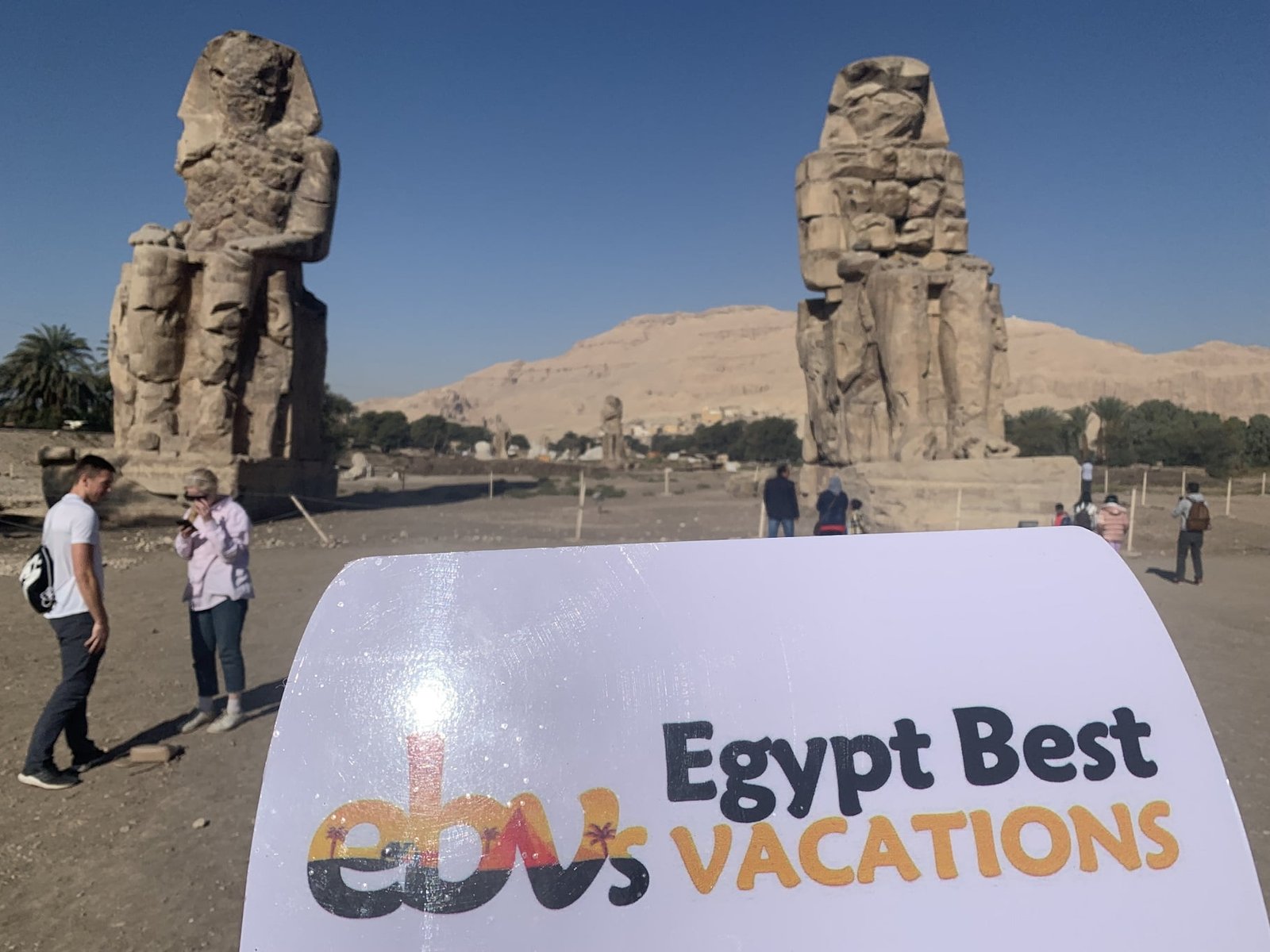The Monolithic Colossi of Memnon
In the vast plain that stretches out around western Thebes, between the Nile and the Valley of the Kings, are the remains of the monumental road which led to the mortuary temple of Amenhotep III. The Colossi of Memnon are all that remain of what was once the largest mortuary temple on the west bank of Luxor. The temple, unfortunately, has disappeared – probably from a high flood, and further devastated by Ramses II and his son Merenptah. They used the fallen blocks to build their own temples – commonly known by the names of Colossi of Memnon.
Pharaoh Amenhotep III:
Amenhotep III, known as Amenhotep the Magnificent or Amenophis III, was the 9th king of the 18th Dynasty.
Reign: 1391 – 1353 BCE, or 1388 – 1351 BCE.
Predecessor: Tuthmosis IV.
Successor: Amenhotep IV/Akhenaton.
Birth Name: Amenhotep (Amun is content).
Coronation Name: Neb-Maat-Re (the Lord of truth is Re).
Consort: Tiye, Sitamun, Iset, and others.
Children: Akhenaton, Beketaten, and others.
Father: Tuthmosis IV.
Mother: Mutemuiya.
Burial: WV 22 (Western Valley of the Kings).
Monuments: Luxor Temple, Malkata, Mortuary Temple of Amenhotep (Colossi of Memnon), and a copy of Luxor Temple in Sudan.
The Colossi of Memnon:
These two gigantic statues are 18 meters high and weigh about 750 tons each. They were cut in monolithic blocks of quartzite sandstone was which quarried at Gabal Al-Hamar near Cairo. Both represent the pharaoh seated on a throne, with his hands resting on his knees. The southern colossus is considerably damaged but is in slightly better shape than the other. Which a legend recounts how in 27 BC a terrible earthquake seriously damaged almost all the monuments of Thebes and opened an enormous crack on the colossus from the top half to the ground before it toppled over.
It was noted that every morning at sunrise, the statue emitted a prolonged indistinct sound, which some travelers seemed like a sad but harmonious song. Great historians such as Strabo, Pausanias, Tacitus, Lucian, and Philostratus corroborated the fact and the Greek poets soon turned it into a fine legend.
Singing Colossi of Memnon:
The “singing stone”, they said, was Memnon, the mythical son of Aurora and Tithonus and the King of Egypt and Ethiopia. Sent by his father to aid Troy, besieged by the Greek army, Memnon covered himself with glory, killing Antilochus son of Nestor, in battle but in turn, he fell under the vengeful hand of Achilles. Aurora appealed in tears to Jove to have her son resuscitated at least once a day.
Thus, every morning, as Aurora caresses her son with her rays, he answers his inconsolable mother with protected lamentations. Despite the legend, the phenomenon can be scientifically explained. The sounds were due to vibrations produced in the broken surfaces by the brusque passage from the cold of the night to the warmth of the first rays of the sun. Over the course of the centuries, the legs of the colossus have accumulated engraved epigrams and other, sometimes quite curious inscriptions.
How to get to Colossi of Memnon from Luxor?
The Colossi of Memnon, located on the west bank of the Nile near Luxor, are easily accessible from Luxor city. Here are a few options for getting there:
Taxi:
Hiring a taxi is one of the easiest and most comfortable ways to get to the Colossi of Memnon. Taxis are readily available in Luxor, and you can negotiate a fare for a round trip. The trip usually takes about 30-40 minutes, depending on traffic and your starting point in Luxor.
Private Tour:
Egypt Best Vacations offers a wide range of private tours to the West Bank, which include a visit to the Colossi of Memnon. This option is more expensive but includes a guide and transportation. Tours typically last half a day to a full day, depending on the number of sites visited.
Public Ferry:
For a more budget-friendly option, you can take a public ferry across the Nile to the west bank and then hire a local taxi or rent a bicycle. The ferry ride is quick, around 5-10 minutes. From the west bank, it’s about a 15-20 minute taxi ride or a 30-45 minute bike ride.
Public Minibus:
Public minibuses are the cheapest option but may require some local knowledge to navigate. These minibuses are shared and can be flagged down in Luxor.
It’s best to visit early in the morning to avoid the midday heat and crowds. Always agree on the fare before starting your journey, especially with taxis and private drivers. Carry water, a hat, and sunscreen, as it can get very hot during the day.
Colossi of Memnon is one of the great wonders of Luxor, So, they are among many of our Egypt travel packages, as well as some of Luxor Day Tours.

